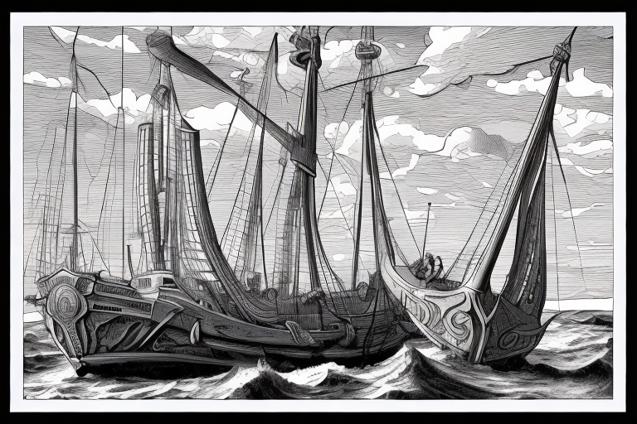
Discover how a windlass can make your life on the water easier, safer, and more enjoyable while anchoring your boat.
The Benefits of a Windlass for Anchoring
Welcome to our unique and adventurous website, dedicated to those who are leaving the rat race behind, purchasing a boat, and setting sail to explore the world with their families. In this article, we will discuss the benefits of a windlass for anchoring, an essential piece of sailing equipment that can make your life on the water much easier and more enjoyable.
Table of Contents
- Introduction to Windlasses
- Types of Windlasses
- Benefits of a Windlass
- Choosing the Right Windlass for Your Boat
- Conclusion
Introduction to Windlasses
A windlass is a mechanical device used to raise and lower the anchor and its chain or rope on a boat. It is an essential piece of equipment for any sailor, as it makes the process of anchoring much easier and safer. Windlasses come in various types and sizes, and choosing the right one for your boat is crucial to ensure smooth and efficient anchoring.
Types of Windlasses
There are three main types of windlasses: manual, electric, and hydraulic. Each type has its advantages and disadvantages, and the best choice for your boat will depend on your specific needs and preferences.
Manual Windlasses
Manual windlasses are the simplest and most affordable option. They require the user to manually turn a handle or crank to raise and lower the anchor. These windlasses are best suited for smaller boats with lighter anchors, as they can be quite labor-intensive for larger vessels.
Pros:
- Affordable
- Simple to install and maintain
- No need for electrical or hydraulic systems
Cons:
- Labor-intensive
- Not suitable for larger boats or heavy anchors
Electric Windlasses
Electric windlasses are the most popular choice for modern sailors, as they offer a good balance between convenience and affordability. These windlasses are powered by the boat’s electrical system and can be operated with the push of a button or a remote control. Electric windlasses are suitable for a wide range of boat sizes and anchor weights.
Pros:
- Easy to use
- Suitable for a wide range of boat sizes and anchor weights
- Can be operated remotely
Cons:
- Depend on the boat’s electrical system
- Can be more expensive than manual windlasses
- Require regular maintenance
Hydraulic Windlasses
Hydraulic windlasses are the most powerful and reliable option, but they are also the most expensive. These windlasses are powered by the boat’s hydraulic system and are capable of handling the heaviest anchors and chain. Hydraulic windlasses are best suited for large boats and yachts, where the extra power and reliability are necessary.
Pros:
- Extremely powerful and reliable
- Suitable for large boats and heavy anchors
- Low maintenance
Cons:
- Expensive
- Require a hydraulic system on the boat
Benefits of a Windlass
There are several benefits to using a windlass for anchoring, including increased safety, efficiency, convenience, and reduced wear and tear on your boat and equipment.
Safety
One of the primary benefits of using a windlass is the increased safety it provides. Manually raising and lowering a heavy anchor and chain can be a dangerous task, especially in rough seas or strong winds. A windlass allows you to control the anchor from a safe distance, reducing the risk of injury.
Additionally, a windlass can help prevent accidents caused by a poorly set anchor. By providing a consistent and controlled method of setting and retrieving the anchor, a windlass can help ensure that your anchor is properly set and secure.
Efficiency
A windlass can significantly improve the efficiency of your anchoring process. Manually raising and lowering an anchor can be a time-consuming and labor-intensive task, especially for larger boats or heavy anchors. A windlass allows you to quickly and easily set and retrieve your anchor, saving you time and energy.
Convenience
The convenience of using a windlass cannot be overstated. With the push of a button or the turn of a crank, you can effortlessly raise and lower your anchor without breaking a sweat. This can be especially beneficial for solo sailors or those with limited mobility, as it eliminates the need for manual labor.
Reduced Wear and Tear
Using a windlass can help reduce wear and tear on your boat and anchoring equipment. Manually hauling an anchor and chain can cause damage to your boat’s deck, as well as strain on the anchor rode and cleats. A windlass helps to evenly distribute the load and minimize the impact on your boat and equipment.
Choosing the Right Windlass for Your Boat
When selecting a windlass for your boat, there are several factors to consider, including:
- Boat size and weight
- Anchor type and weight
- Chain or rope type and length
- Available power source (electrical or hydraulic)
- Budget
It’s essential to choose a windlass that is compatible with your boat and anchoring system and has the necessary power and capacity to handle your anchor and rode. Consult with a marine professional or windlass manufacturer to determine the best option for your specific needs.
Conclusion
A windlass is an essential piece of sailing equipment that can greatly improve your anchoring experience. By providing increased safety, efficiency, convenience, and reduced wear and tear, a windlass is a valuable investment for any sailor. Whether you choose a manual, electric, or hydraulic windlass, be sure to select the right model for your boat and anchoring system to ensure smooth and efficient anchoring on your sailing adventures.